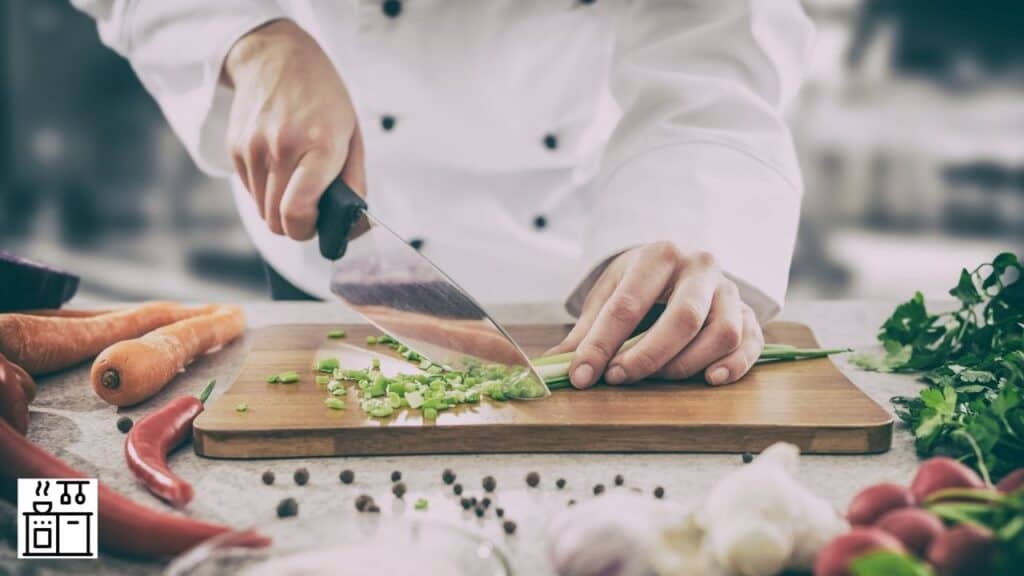Most chefs are so picky about knives that they carry their favorite set wherever they go. It’s not surprising as a top-notch knife can drastically reduce the time needed for food prep and improve their productivity in the kitchen. So, what knives do professional chefs use?
Professional chefs use a chef’s knife, a paring knife, and a serrated knife for most of their tasks. They choose the knives based on their weight and how well they balance in their hands. They also look at how the blade is riveted in position and prefer forged, high-carbon, stainless steel knives.
Let’s now delve deeper into this.
3 Most Important Knives According To Professional Chefs
In restaurants and professional kitchens, chefs deal with a lot of food prep every day.
Not only do they have to get through large amounts of ingredients each day, but they must also prepare them with utmost precision.
A good knife set is essential to minimize effort without compromising on quality.
Now, there are a staggering number of knives available for different purposes.
If you look at a typical chef’s knife kit, it will have ten to eighteen different knives.
Each of these has a specific purpose.
However, chefs don’t use all these knives all the time.
Instead, they usually manage with just three or four knives and save the specialty knives only for specific cooking needs.
So, which knives are essential for a chef? Let’s find out.
1. The Chef’s Knife
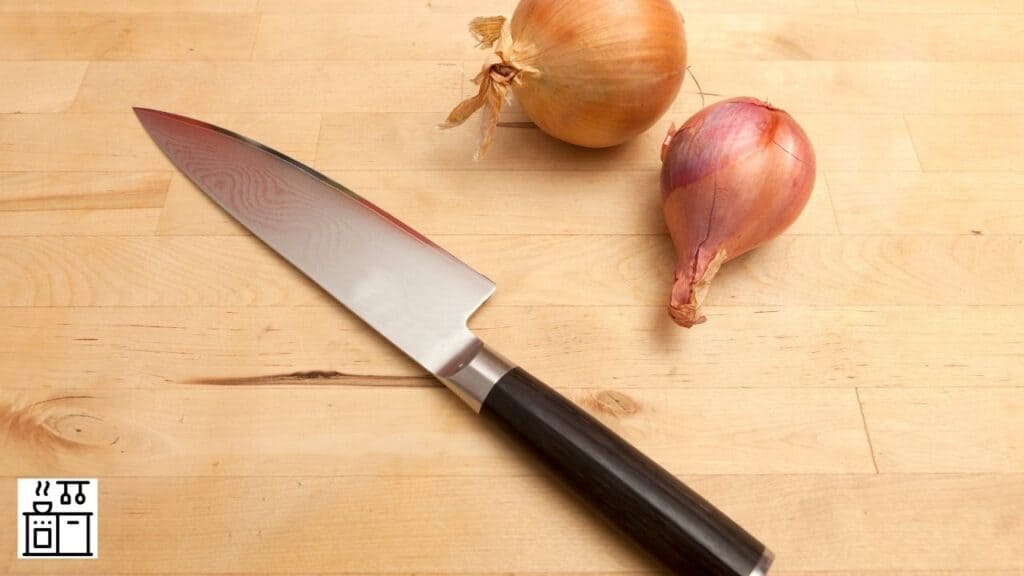
As the name suggests, the chef’s knife is the most important knife in a chef’s tool kit.
It’s a staple in any professional kitchen, and most chefs use it for the greater part of their food prep tasks.
This versatile blade measures six to twelve inches and is broad and sharp.
It’s not too small or too big, so it’s convenient to handle. Although strong, it’s lightweight and balances well.
You can use it for chopping, slicing, dicing, and cutting thick rinds of fruits like watermelons.
2. Paring Knife
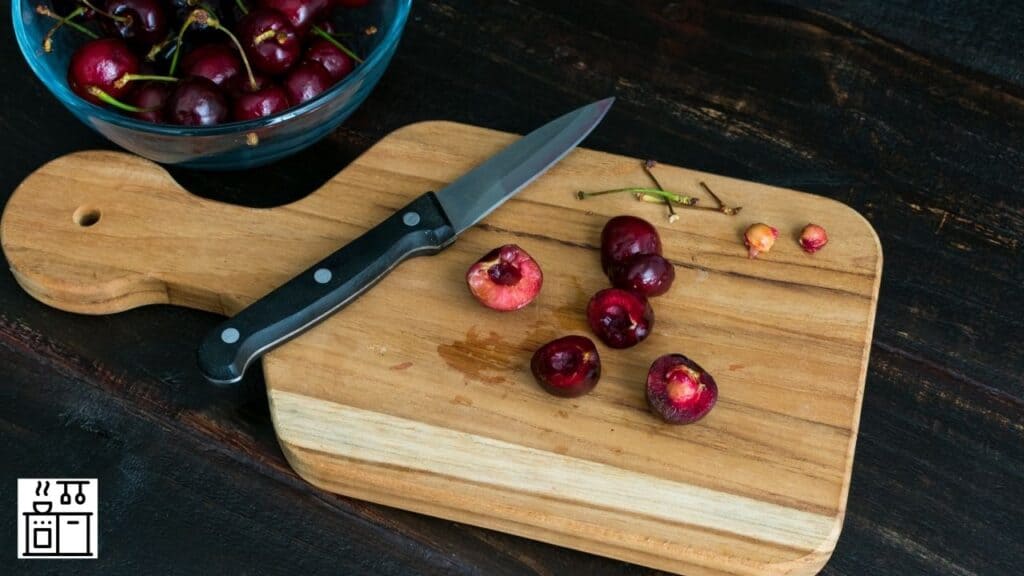
A paring knife is a miniature version of the chef’s knife. It has a similar shape and structure but has a shorter blade.
The blade has a sharp, angular tip which improves precision and control.
You can use it to peel, shave, and cut ingredients.
It offers good control and is suitable for delicate tasks where using large blades can be risky.
Paring knives are perfect for peeling apples and onions and coring tomatoes.
3. Serrated Knife
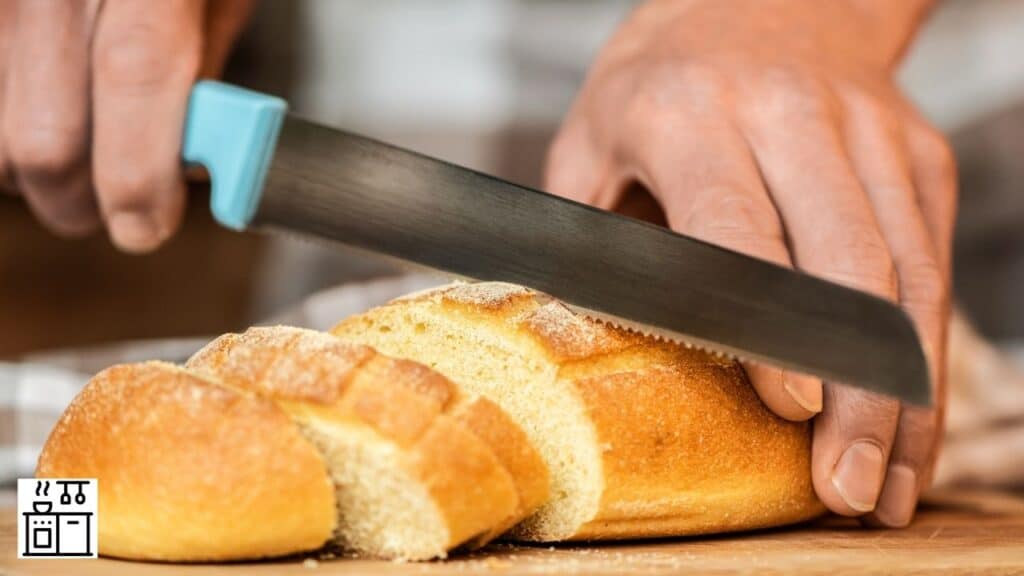
The third most important knife for a professional chef is a serrated knife.
Serrated knives can cut through items with different textures on different sides.
For instance, bread is hard on the outside but soft on the inside.
So, you need a knife that will cut through both sides without affecting its appearance.
A serrated knife is suitable for the task because it has a tooth-like scalloped blade that applies gentle pressure on the ingredient.
You can also use serrated knives to cut limes, lemons, tomatoes, and cucumbers.
Recommended Further Reading:
- Which Pans Are There in Every Michelin Chef’s Kitchen?
- Is Pressure Cooker an Essential Tool for Chefs?
Other Knives That Professional Chefs Use
Chefs can do most of their work with a chef’s knife, paring knife, and serrated knife.
Nevertheless, they need specific other knives for specialized tasks and keep various knives handy.
Here are some of the other knives that are useful for professional chefs.
1. Santoku Knife
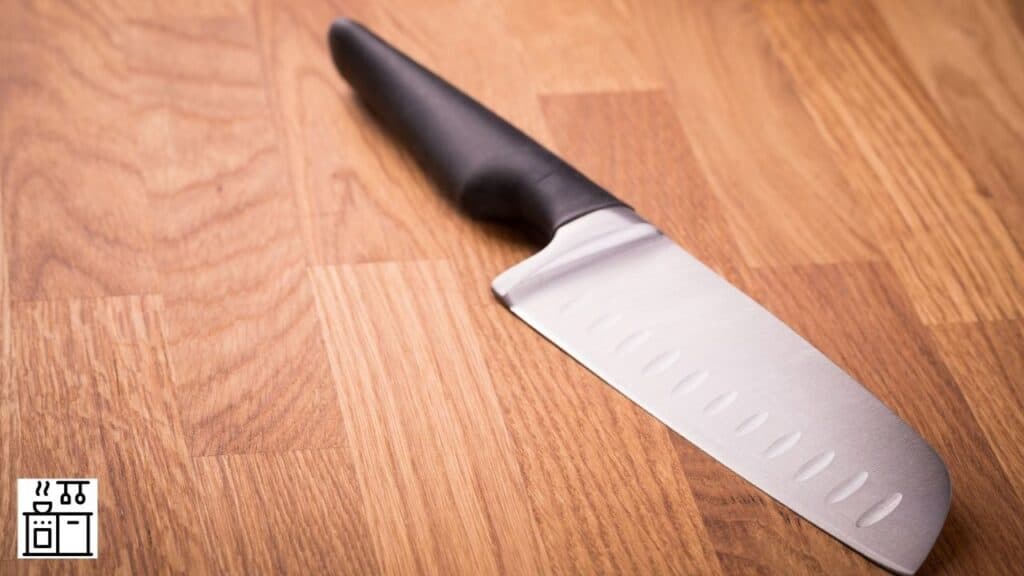
The Santoku knife is a Japanese knife. It resembles a chef’s knife but is slightly shorter, and the tip of the blade curves downward.
Some versions of the Santoku knife have divots on the lower part of the blade.
These help prevent the food from sticking to the surface.
You can use a Santoku knife for the same purposes as a chef’s knife. It’s perfect for chopping, dicing, and even boning meat.
2. Boning Knife
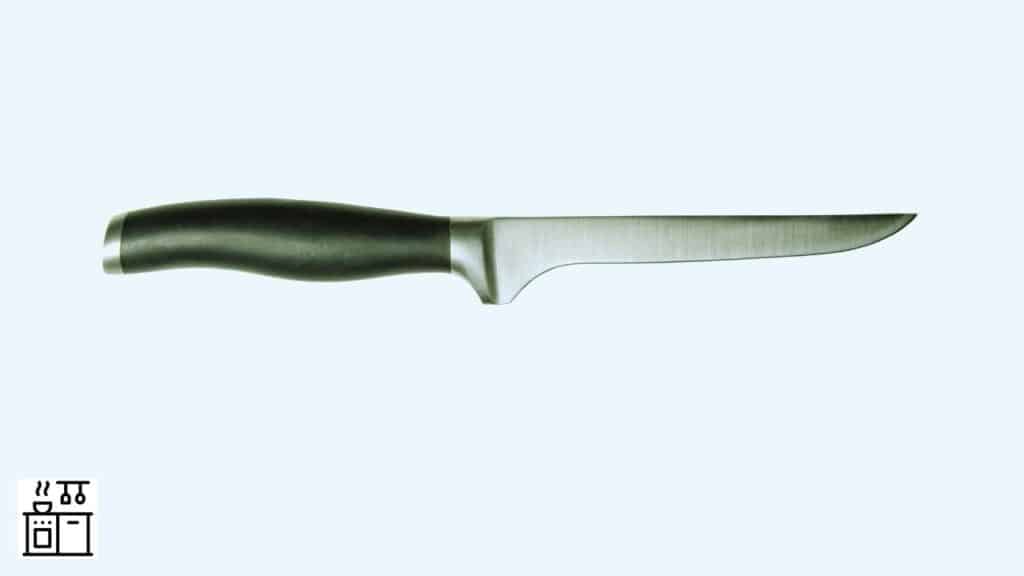
A sharp and pointed blade is necessary to cut through meat and remove it from the bone. A boning knife can do this.
It has a thin 6-inch blade that points upward. You can use it to remove fat or skin from the meat.
The sharp blade will enter the meat and separate it from the bone.
You can also use it to remove bones from fish or separate meat from the main bone in poultry or red meat by closely following the contours of the meat.
The edge of a boning knife will either be stiff and flexible or straight and curved.
Since each of these edges produces different outcomes, you should choose a boning knife based on what you need it for.
3. Cleaver
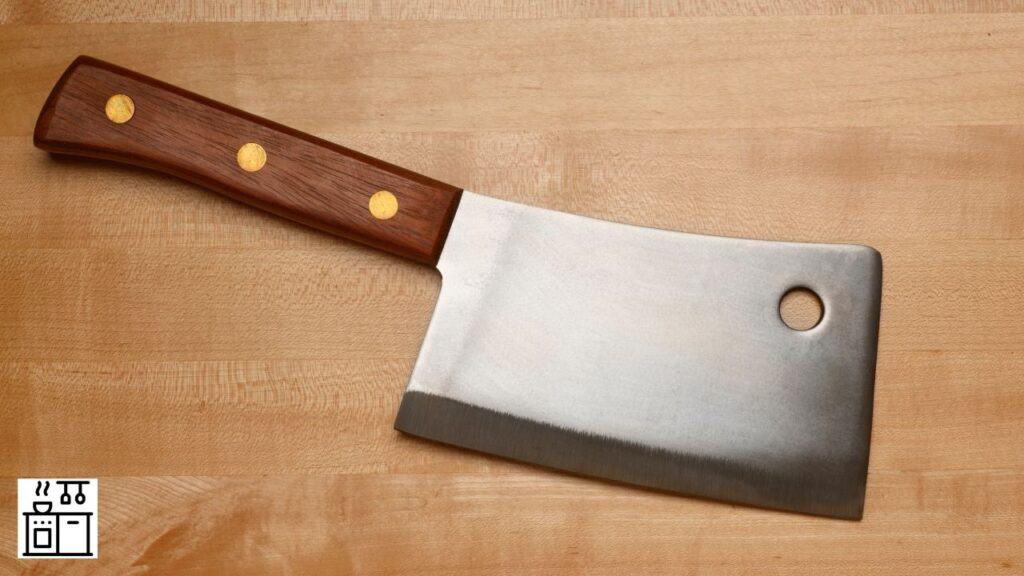
Cleavers are suitable for heavy-duty jobs. You will find them useful to cut through thick rough produce or bulky layers of meat.
They have a heavy, sharp blade and a weighted handle.
A good-quality cleaver can even cut through bone and break a coconut shell.
You can also use the heavy blade to pulverize ingredients like garlic and pepper.
While this heavy-duty knife reduces the effort of cutting through hard, tough ingredients, it’s not suitable for fine cutting.
You will have to exercise great caution when using it to cut small produce.
4. Slicing Knife
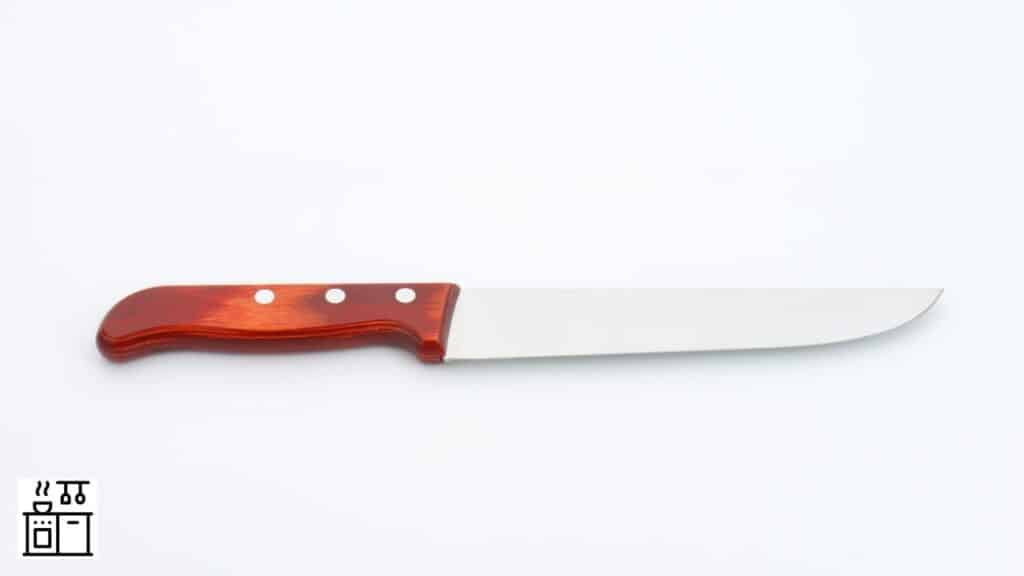
Also known as a steak knife, the slicing knife is usually used to cut cooked meat.
It’s a long and narrow blade of eight to ten inches in length. This knife easily cuts through meat and separates it from the bone.
Steak knives may have a serrated edge to prevent food from sticking to the surface.
It’s narrow but flexible and easy to maneuver.
What Knives Do Michelin Chefs Use?
It’s difficult to zero in on a single brand or type of knife used by Michelin chefs since it’s a matter of personal preference.
Nevertheless, most Michelin chefs rely on a chef’s knife or Santoku knife for most food prep tasks.
Chefs like Gordon Ramsay also recommend a paring, carving, and serrated knife handy to cover all bases.
Many chefs prefer Japanese brands like Shun and Kamikoto, made from high-quality steel.
Some others opt for high-quality stainless-steel knives from famous French and German brands like Wüstoff and Henckels.
Related Further Reading:
- Are Grill Pans Suitable for Use in an Oven?
- Is Sticking an Issue with Enamel Pans?
- What Materials Make a Heatproof Bowl?
5 Important Factors To Consider While Choosing Knives
A good set of knives can make a great difference to your time in the kitchen.
It will reduce your effort, improve speed, and produce better-looking cuts.
Here are some of the most important factors to look for in a good knife.
1. Blade Quality
Knives can either have forged or stamped metal blades.
Forged metal is a better choice as it’s made by molding metal using high heat.
Knives with forged metal blades are sturdy and durable.
Forged blades are also less prone to breakage and bending.
Meanwhile, stamped blades are made of punched steel. The edges are sharpened after cutting the blade out.
You may end up having to sharpen stamped blades frequently to keep them going.
2. Weight
The weight of a knife will determine how comfortable you are with wielding it. It’s mostly a matter of personal preference.
Most chefs find that they can exercise better control over a heavy knife.
For best results, it’s better to choose knives that balance well in your hand without slipping or weighing you down.
3. Balance
For a knife to be comfortable, it should balance well in your hand.
The weight of the handle should balance against the weight of the blade.
If the weight of the knife is concentrated on one side, chopping will feel very difficult.
The type of handle will also make a difference to the utility of a knife.
Nonetheless, this is a matter of personal preference.
Depending on the size of your hands, strength, and how you move the knife, you may prefer to choose between plastic, wood, and composite materials.
4. Maintenance And Durability
Blades can be made of different materials like stainless steel, carbon steel, alloy steel, iron, or tool steel.
Some of these materials are prone to corrosion and rusting. Materials like carbon steel will also stain.
If you are not too keen on continuous maintenance, you may find it easier to go with materials that are less prone to corrosion or stains.
Knife blades will get dull with continued use, and some materials will need frequent sharpening to work well.
Stainless steel and high-carbon steel knives stay sharp for a long time and are easy to sharpen at home.
Ceramic knives also stay sharp for long. However, it’s not easy to sharpen them once the blades get dull.
Interesting Further Reading:
- What Does a Wok Ring Do?
- Can Stainless Steel Bowls Go In The Oven? (What Bowls Can?)
- Is Quartz Suitable for Hot Pans?
5. Blade Fixing
In good knives, the blade will run the length of the handle. It will be riveted into place and properly secured.
These knives will be durable, sturdy, and reliable.
However, you can also find knives with the blade inserted into the handle.
In these knives, the blade will usually be held in place with glue.
Over time, the blade can get dislodged. So it’s unsafe for long-term use.

